 |
General Audience Kids & Parents Special Interest

by DT Max
The New Yorker, December 2017
Algorithms made him a Wall Street billionaire. His new research center helps scientists mine data for the common good.
https://www.newyorker.com/magazine/2017/12/18/jim-simons-the-numbers-king
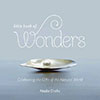
by Nadia Drake
National Geographic, 2016
Santa brought this wonderful little book to Prof. Shakhashiri this year during the 47th annual Once Upon a Christmas Cheery, In the Lab of Shakhashiri! It's filled with thought-provoking facts about the world, paired with breathtaking National Geographic nature and wildlife photography. Each striking image will allow readers to appreciate the wonder and beauty of the world around us.
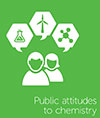
Public attitudes to chemistry
from the Royal Society of Chemistry
Research Report TNS BMRB 2015
This report aims to encourage the chemistry community to listen to the public, in terms of their starting point in relation to chemistry and what is meaningful for them, rather than identifying areas they struggle to understand or are confused or ‘wrong’ about. It does not assume views can be ‘corrected’, instead that they are important starting points for positive communication of chemistry.
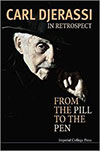
In Retrospect: From the Pill to the Pen
by Carl Djerassi
Imperial College Press, 2014
Carl Djerassi once again displays his virtuosity as a humane scientist reflecting on his life journey as well as the idiosyncrasy of others. His honesty is refreshing as he reveals human flaws and foibles. He penetrates deeply and provokes emotions about character and behavior. His struggles with identity and insecurity are exposed openly and thus are empowering. This book by one of the most influential people of our time is a must-read. It is more striking than my favorite Djerassi autobiography: This Man’s Pill.
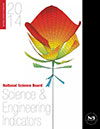 Science and Engineering Indicators 2014
Science and Engineering Indicators 2014
by the National Science Board
The National Science Foundation, 2014
Science and Engineering Indicators 2014, the biennial report to the President and the Congress of the United States was just released by the National Science Board, the governing body of the National Science Foundation. The massive volume of quantitative data on the U.S. and international science and engineering enterprise was compiled by NSF's Division of Science Resources Statistics. It provides a factual and policy-neutral description of the scope and vitality of the global science and engineering enterprise. It is an excellent resource and a must-read for anyone interested in science research and education.
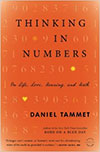 Thinking in Numbers: On Life, Love, Meaning, and Math
Thinking in Numbers: On Life, Love, Meaning, and Math
by Daniel Tammet
Little, Brown and Company, 2012
In this collection of 25 short essays, Daniel Tammet examines the many ways mathematics permeate our lives. Mr. Tammet is a mathematical savant who holds the Guinness record for reciting the decimal value of pi to over 22,000 digits. In this book he proves himself to be a comparable master of words. Each essay describes a mathematical view of occurrences that frequently seem to have no mathematical component. Many of the essays contain ideas and phrases of astonishing poetry. One does not need to be a fan of mathematics to see the charm and beauty of numbers as they are described here.
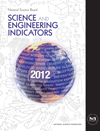 Science and Engineering Indicators 2012
Science and Engineering Indicators 2012
by the National Science Board
The National Science Foundation, 2012
Science and Engineering Indicators 2012, the biennial report to the President and the Congress of the United States was just released by the National Science Board, the governing body of the National Science Foundation. The massive volume of quantitative data on the U.S. and international science and engineering enterprise was compiled by NSF's Division of Science Resources Statistics. It provides a factual and policy-neutral description of the scope and vitality of the global science and engineering enterprise. It is an excellent resource and a must-read for anyone interested in science research and education.
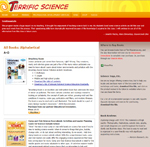 Terrific Science
Terrific Science
Terrific Science is an internationally recognized provider of professional development and developer of chemistry education resources for teachers and students run by science educators Mickey Sarquis and Lynn Hogue. This web resource offers a whole range of books for all ages and interest levels, with offerings like a book of year-round science projects, or a volume all about teaching chemistry with toys.
Visit their book listings at http://www.terrificscience.org/shop/all-books-alphabetical/
For the full website, visit http://www.terrificscience.org/
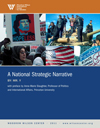 A National Strategic Narrative
A National Strategic Narrative
by Mr. Y
The Woodrow Wilson International Center for Scholars, 2011
"Mr. Y" is the pseudonym of two military officers, Capt. Wayne Porter, USN, and Col. Mark Mykleby, USMC. Their call for a national strategic initiative is their own opinion, and does not reflect official policy
of the Navy or the Marines. They say that in a time of rapid change, when the world leadership of the U.S. is in question, the country needs a strategy that everyone understands. Writing a preface, Anne-Marie Slaughter, Director of Policy and Planning, U.S. Department of State (2009-2011) says, "We need a story that will transcend our political divisions, orient us as a nation, and give us a common direction and the confidence and commitment to get to our destination." The authors intend to counter what they see as a round of "declinism" in the U.S.—a common belief that the country is declining with respect to other nations in every area including the economy, education and health care. We recommend checking out this important essay concerning the future of the nation.
Download a PDF copy of this report
 Increasing Scientific Literacy: A Shared Responsibility
Increasing Scientific Literacy: A Shared Responsibility
by G. Wayne Clough, Secretary
The Smithsonian Institution, 2011
This report by the Smithsonian Institution asks the questions, “Is scientific literacy important? Is it urgent?” and answers them with a resounding yes. Because of the vital roles science and technology play in our economy and our world, science literacy is necessary for the United States to compete on a global level. The report discusses why we should care, and not only looks back at the history of science in America, but also forward to how we must take responsibility for this daunting task, and where we must go from here. This issue is especially important to WISL, as increasing science literacy among the general public is one of our mission statements.
Download a PDF copy of this report
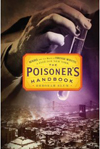 The Poisoner's Handbook: Murder and the Birth of Forensic Medicine in Jazz Age New York
The Poisoner's Handbook: Murder and the Birth of Forensic Medicine in Jazz Age New York
by Deborah Blum
The Penguin Press, 2010
In this fascinating combination of history and science, UW-Madison Journalism Professor Deborah Blum describes how early medical examiners battled political corruption to establish a scientific approach to investigating deaths, and how they discovered new methods of detecting poisons and convicting murderers. These unsung heroes, chief medical examiner Charles Norris and toxicologist Alexander Gettler, also campaigned to expose and eliminate less intentional poisonings from sources like: the wood alcohol that flooded the illicit market during prohibition, radium--whose danger was not initially understood--and the many poisons that were routinely included in a wide range of consumer products. The cases Blum studies are as dramatic and sensational as any CSI fiction and readers will find the book hard to put down.
Read a related Scientific American blog post by Deborah Blum
 Science and Engineering Indicators 2010
Science and Engineering Indicators 2010
by the National Science Board
The National Science Foundation, 2010
Science and Engineering Indicators 2010, the biennial report to the President and the Congress of the United States was just released by the National Science Board, the governing body of the National Science Foundation. The massive volume of quantitative data on the U.S. and international science and engineering enterprise was compiled by NSF's Division of Science Resources Statistics. It provides a factual and policy-neutral description of the scope and vitality of the global science and engineering enterprise. It is an excellent resource and a must-read for anyone interested in science research and education.
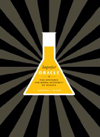 Imperfect Oracle: The Epistemic and Moral Authority of Science
Imperfect Oracle: The Epistemic and Moral Authority of Science
by Theodore L. Brown
The Pennsylvania State University Press, 2009
Since my days on the faculty at University of Illinois I have admired Ted Brown and have benefited from his mentorship and friendship. His latest book is a must-read for scientists, graduate students, policy makers, and everyone interested in the role of science in society. Science and scientists speak with a lot of authority in our culture, but what is that authority based on? Is it deserved? What about people who reject the findings of science, such as the theory of evolution? What, if anything, should scientists do about them? How does scientific authority relate to other kinds of authority such as religion, government and business? Brown, professor emeritus of chemistry and vice-chancellor emeritus at the University of Illinois, tackles these and many other important questions in this timely and
thoughtful book on the history, philosophy and influence of science in America. I hope the paperback edition will make the book more accessible (the hardcover copy is listed at $75).
 The Elements:
The Elements:
A Visual Exploration of Every Known Atom in the Universe
by Theodore Gray
Black Dog and Leventhal Publishers, 2009
Many books are promoted as “lavishly illustrated” but this one lives up to the billing. Beautiful photos by Gray and Nick Mann cover most of every page and the short articles about each element are delightfully witty as well as informative. This is just a periodic table of the elements in the same way that the Taj Mahal is just a mausoleum. A periodic table, Gray says, “is the universal catalog of everything you can drop on your foot.” This is a gorgeous catalogue, a combination of hard science and art, that will deepen your appreciation of the physical world.
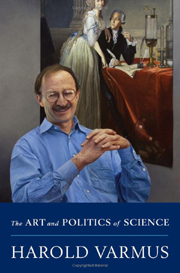 The
ART and POLITICS of SCIENCE
The
ART and POLITICS of SCIENCE
by Harold Varmus
W. W. Norton & Co., 2009
Harold Varmus is among very few who authoritatively can address the interaction of science and politics and the role of science in society. A Nobel laureate for his cancer research (Medicine, 1989), Varmus has also been an undergraduate journalism major, a graduate student in literature, a physician and Director of the National Institutes of Health (1993-1999). He is currently President of the Memorial Sloan-Kettering Cancer Center and an advisor to President Obama. This well written book is easy to read and addresses significant medical and ethical issues including embryonic stem cell research, climate change and world health needs. It also describes his own research and provides clear explanations of the latest cancer research. Anyone interested in applying science to political reality should read this book. Varmus' Nobel Prize biography can be found here.
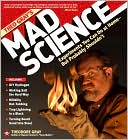 MAD
SCIENCE: Experiments You Can Do at Home --
MAD
SCIENCE: Experiments You Can Do at Home --
But Probably Shouldn't
by Theodore Gray
Black Dog and Leventhal Publishers, 2009
Gray, author of the long-running "Gray Matter" column in Popular
Science, displays scientific principles through extreme experiments.
You don't have to do the experiments to thoroughly enjoy the book (safety
precautions are emphasized with each experiment and the materials and
equipment for many of them are not readily available). Lavishly illustrated
with striking photos, the book shows the author's deep love of
science, and draws readers in. Whether it's making ethanol ("easy,
dangerous and probably illegal"), trapping lightening in a plastic
block or making fire without flame, there's something in this book to
interest and delight almost anyone. Professor
Shakhashiri says, "Theo Gray is at his best showing us dazzling transformations
with explanations. There is so much to learn from this book, but I will
never do any of these experiments at home, and neither should you."
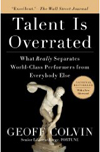 Talent is Overrated
Talent is Overrated
By Geoff Colvin
Portfolio, 2008
The title of this book which was recommended to me by a graduate student piqued my interest because I frequently say in my public presentations that as a university professor I am in the business of talent development. Colvin, senior editor-at-large for Fortune, sets out to debunk the popular idea that highly successful people have an innate talent or genius that makes them “naturals” at their chosen vocation, and he presents a book full of examples and the latest science to prove his point. For example, Mozart is widely considered a genius, and his accomplishments are assumed to be out of the reach of lesser talents. But Colvin points out that Mozart’s musician father had him practicing music from the time he was a toddler, and that Mozart’s early attempts at composing were very ordinary and derivative of other works. It was not until he was in his 20s, after more than 15 years of practice and performing and more than 10 years of composing that Mozart started producing his masterpieces. Colvin provides hope for those who think they just don’t have the talent to accomplish something by proving that hard work, through dedicated and deliberate practice, beats talent every time.
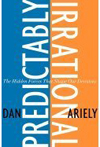 Predictably Irrational: The Hidden Forces That Shape Our Decisions
Predictably Irrational: The Hidden Forces That Shape Our Decisions
By Dan Ariely
HarperCollins, 2008
All of our decisions are influenced by irrational forces which we are not even aware of, according to Ariely, who is James B. Duke Professor of Behavioral Economics at Duke University. Emphasizing the empirical approach, he presents many preconceived notions of how people behave and describes the design of clever experiments to test those notions. The results of these experiments demonstrate that humans are not always rational and prove the point that our irrationality is entirely predictable. He says, "If we can learn to embrace the Homer Simpson within us, with all our flaws and inabilities, and take these into account when we design our schools, health plans, stock markets, and everything else in our environment, I am certain we can create a much better world." This entertainingly written book is recommended for anyone who is interested in self-understanding.
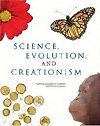 Science,
Evolution, and Creationism
Science,
Evolution, and Creationism
National Academy of Sciences
Institute of Medicine
The National Academy Press, 2008
This new book addresses current controversies over the teaching of evolution, now under attack by some people who propose a variety of ideas combined here under the title “creationism.” Written by a panel of 15 distinguished scientists, the book provides a clear and concise explanation of evolution. It also notes recent discoveries that add to the already overwhelming body of evidence from all scientific disciplines supporting evolution as the core explanation of the development of life on Earth and as the basis of all biological sciences including medicine. The book also deals directly with various challenges to evolution by creationists. It notes that the scientific use of the word “theory” is very different from everyday use of the word. The authors declare that science and religion are not opposing ideas, noting that many religions and religious leaders accept evolution as fact. They also declare that that creationism does not belong in the science classroom. It is not a scientific theory because it is not provable or disprovable, and it makes no predictions concerning further discoveries (Darwin made several predictions that have proven to be correct.). The authors state, “Science can neither prove nor disprove religion” and “The study of science need not lessen or compromise faith.” The book is short, just 55 pages, well-organized and illustrated, and readily accessible to any interested reader. Science, Evolution and Creationism can be ordered and read on line from the The National Academies Press at www.nap.edu.
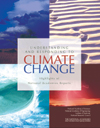 Understanding
and Responding to Climate Change
Understanding
and Responding to Climate Change
National Academy of Sciences
The National Academy Press, 2008
This concise, 24-page booklet contains the highlights of the National Academies’ reports on climate change, reports from the National Academy of Sciences, the National Academy of Engineering, the Institute of Medicine and the National Research Council. The academies use the term “climate change” rather than “global warming” to indicate that warming causes many changes including changes in weather patterns, ocean levels and ice and snow cover, with corresponding effects on plants and animals. The academies say, “Scientific understanding of climate change is now sufficiently clear to begin taking steps to prepare for climate change and slow it.” The reports are the product of the National Academies’ consensus study process which has included thousands of scientists, engineers, public health officials and other experts. This booklet is a great resource for those seeking more information on climate change. The booklet can be ordered from the National Academies Press, or you can click here to view it.
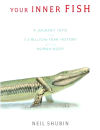 Your
Inner Fish: A Journey into the 3.5 Billion Year History of the Human Body
Your
Inner Fish: A Journey into the 3.5 Billion Year History of the Human Body
by Neil Shubin
Pantheon, 2008
We don't need to find fossils for evidence of evolution-the evidence is right in our own bodies. This is a fascinating and eloquent tour of the human body and how its structures and functions developed from previous life forms. Shubin, Professor of Anatomy at the University of Chicago and provost of the Field Museum of Natural History, is best known for his discovery in 2006 of Tiktaalik, a "missing link" between fish and amphibians. Taktaalik, which lived about 365 million years ago, had both gills and lungs, a neck and shoulders, and front limbs/fins with which it could move on land. Shubin shows how anatomy developed by Tiktaalik, and all other earlier life forms, is still with us, and how the hand-me-down nature of the human body makes us vulnerable to disease and damage. The book provides great insights into both human physiology and evolution.
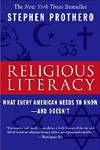 Religious Literacy: What Every American Needs to Know -- And Doesn't
Religious Literacy: What Every American Needs to Know -- And Doesn'tby Stephen Prothero
HarperOne, 2007
This is obviously not a science book, but Prothero, chair of the religion department at Boston University, argues that religious literacy is necessary for the understanding of important public issues. Just as controversial issues such as embryonic stem cell research and the teaching of evolution are questions of science, opinions concerning them are also based, for many people, on religious belief. But Prothero says most Americans are religiously illiterate. While polls consistently show that about 85 percent of Americans identify themselves as Christian, half of all Americans can’t name even one of the four Gospels in the Bible, and ignorance concerning other religions is even greater. The WISL has always contended that science literacy is necessary for citizens of a democracy to make informed decisions, and Prothero makes a case that religious literacy is equally important. The book contains an extensive glossary explaining various religious beliefs and terminology, and Prothero hopes the book will promote understanding of the contending sides in debates over important public issues.
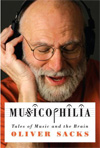 Musicophilia:
Tales of Music and the Brain
Musicophilia:
Tales of Music and the Brain
by Oliver Sacks
Alfred A. Knopf, 2007
This book explores the workings of the human brain by examining reactions to music in a wide variety of people, from great musicians to the tone-deaf, as well as people whose perceptions are altered by illness or injury. It also describes how music can relieve the symptoms of brain disease and injury. Sacks, Professor of Clinical Neurology and Psychiatry at Columbia University, explains the latest discoveries in neurology through fascinating and unforgettable stories of individual cases and delves deeply into the relationship between emotion and intellect. This is a rare book of “hard science” which is also capable of moving readers to tears of joy or sorrow. We heartily recommend this and all of Sacks’ books (10 in all).
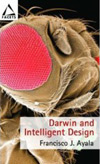 Darwin
and Intelligent Design
Darwin
and Intelligent Design
by Francisco J. Ayala
Fortress Press, 2006
This is a clearly written, short (104 pages) and inexpensive paperback that provides a concise rebuttal to the doctrine of intelligent design. While fully respectful of religion, it answers several creationist arguments, such as the claim that the human eye is too complicated to have arisen through evolution by natural selection. Ayala concludes, “Religious believers should see in the magnificent achievements of modern science a manifestation of the glory of God, not a threat to their faith.” Ayala is uniquely qualified to address this issue. He holds chairs as Professor of Biological Sciences, Ecology and Evolutionary Biology and also Professor of Philosophy at the University of California, Irvine. He is a former Catholic priest.
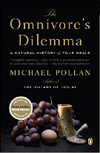 The Omnivore's Dilemma: A Natural History of Four Meals
The Omnivore's Dilemma: A Natural History of Four Meals
by Michael Pollan
Penguin Books, 2006
Michael Pollan, Knight Professor of Journalism at the University of California-Berkeley, has written several best-selling books on food, nutrition and health. Pollan says the omnivore’s dilemma is what to have for dinner. Americans have so many choices and are influenced by so many food fads that this is not an easy choice. In fact, America has an eating disorder, according to Pollan, with the abundance of processed foods and fast foods contributing to an epidemic of obesity and poor health. The first of the four meals, consisting of food from agribusiness, is based on corn. Virtually all animal products, high fructose corn syrup in soft drinks and many other foods start with corn. Pollan says Americans, more than anyone else, are the corn people. The other meals are two based on grass (one from local sources and one from all sources) and a hunter/gatherer meal (Pollan learned hunting and gathering skills to duplicate a meal our distant ancestors would have eaten.) This is a great book for anyone concerned about nutrition and health and who wonders, “What should I have for dinner?” Pollan’s subsequent book, In Defense of Food, is the basis of a common reading program in 2009-2010 at the University of Wisconsin-Madison. The program is designed to stimulate discussion throughout the community, and his visit to Madison included discussion groups on campus and at public libraries, a lecture by Pollan and lectures by other experts on food, health and nutrition. WISL is a co-sponsor of his visit.
 Electric
Universe: The Shocking True Story of Electricity
Electric
Universe: The Shocking True Story of Electricity
by David Bodanis
Crown Publishers, 2005
This is the engrossing story of the development of the practical applications of electricity and the theoretical understanding of electricity from the early 1800s to the present. It includes the personal stories of many colorful characters involved in the development of electricity, some of them villainous, some heroic and some tragic. The book starts with the development of the telegraph and ends with the way the human brain uses electricity. Bodanis makes the case that the use of electricity has changed almost everything about human existence, conquering time and distance and banishing the night. There’s one puzzling omission–there’s no mention of Nicola Tesla, inventor of AC current and many improvements in electric motors, who was one of the most colorful characters in the history of electricity. Nevertheless, this book is both highly informative and a great job of story telling–you won’t want to put it down.
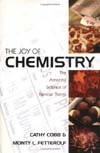 The
Joy of Chemistry: The Amazing Science of Familiar Things
The
Joy of Chemistry: The Amazing Science of Familiar Things
by Cathy Cobb and Monty L. Fetterolf
Prometheus Books, 2005
Written by a prep school science teacher and a chemistry professor, this book is an enjoyable introduction to chemistry using examples from everyday life and experiments you can do at home to explain the principles of chemistry. From making a bottle rocket to the chemistry of pizza when it goes bad, the authors explain what happens. Want to know the definition of hard water? How a semiconductor works? What causes body odor? The physics of the flush toilet? Why beans cause flatulence? All this and more is presented in an entertaining manner that’s relevant to our everyday lives. (Cathy Cobb is also author of Magick, Mayhem and Mavericks: The Spirited History of Physical Chemistry and co-author of Chemistry’s Lively History from Alchemy to the Atomic Age. )
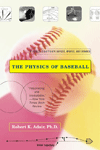
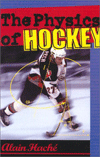
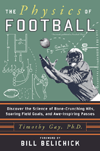
The
Physics of Baseball
by Robert K. Adair
Perennial, 1990, 1994, 2002
The
Physics of Hockey
by Alain Hache
John Hopkins University Press, 2002
The
Physics of Football
by Timothy Gay
Harper, 2004, 2005
We know that all sports are governed by the laws of physics, but these books delve into fascinating details. All three were written by physics professors who are also fans of the sport they examine. Want to know how far a curve ball actually curves or how a Zamboni ice- resurfacer works? Did you know that a professional football lineman can generate up to four horsepower firing off the line of scrimmage and hit with tons of force? Scientifically accurate and accessible to readers of high school age and up, these books make physics fun and add to the appreciation of sports.
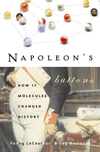 Napoleon’s
Buttons: 17 Molecules that Changed History
Napoleon’s
Buttons: 17 Molecules that Changed History
by Penny Le Couteur and Jay Burreson
Penguin Group (USA) 2004
This is a fascinating story of how certain desirable molecules shaped
civilizations through trade and exploration and also stimulated technology
through the search for substitutes. Among the molecules profiled are spices,
glucose (sugar), silk and nylon, dyes (which led to the drug industry),
the Pill, morphine, nicotine, caffeine, plastics and salt. Among the consequences
of the search for these molecules was the colonization of much of the
world by European nations and the establishment of slavery in the New
World. The chemistry of the molecules is amply explained, but non-chemists
can enjoy the book as well without delving into the equations. The title
refers to a claim that the uniforms worn by Napoleon’s soldiers
had buttons made of tin, which becomes brittle and crumbles in very cold
temperatures. During Napoleon’s disastrous retreat from Moscow in
the dead of winter, so the story goes, the soldiers’ buttons crumbled,
leaving them even more susceptible to the cold. The authors can’t
verify the story–“tin disease” was well known at the
time and it seems unlikely that a major army would make such a mistake–but
it illustrates how important a common chemical can be.
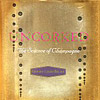 Uncorked:
The Science of Champagne
Uncorked:
The Science of Champagne
by Gerard Liger-Belair
Princeton University Press, 2004
Liger-Belair is a physicist who is fascinated by bubbles. This is certainly appropriate, since he is a professor at the University of Reims in the heart of champagne country. He has used a high-powered, high-speed video microscope to reveal the secrets of the champagne bubbles, which tickle the nose and carry the aromas of the wine. The science presented here is accurate as well as accessible in this modest-length book of 143 pages, which contain many images produced by the microscope. The book is a delightful blend of science, practicality, and pleasure. Liger-Belair’s summary says it best: “Your capacity for enjoyment is, I hope, made richer for the time you took to gain insight into the physics and chemistry of effervescence. I hope that the experience inspires you to savor all your life’s moments just as you would relish every sip of champagne.”
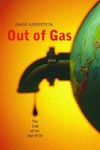 Out
of Gas: The End of the Age of Oil
Out
of Gas: The End of the Age of Oil
by David Goodstein
W.W. Norton and Company, 2004
Goodstein, a professor of physics at Caltech, makes his position very clear: “Civilization as we know it will come to an end sometime in this century unless we can find a way to live without fossil fuels.” This short book (123 pages) is written in plain, easy to understand English. Goodstein provides clear explanations of each type of fuel and energy system as well as the laws of conservation of energy and thermodynamics. He makes it clear that trouble will start, not when each type of fossil fuel runs out, but when the supply of each starts to decline as demand continues to increase. With oil, we may already have reached that point. Goodstein says the only hope to save civilization is a massive commitment to developing new energy technologies, a commitment at least as great as the drive to put men on the moon in the 1960s. We have not yet made this urgent commitment. After reading this book, you may agree that we should.
 Science
Literacy for the Twenty First Century
Science
Literacy for the Twenty First Century
edited by Stephanie
Pace Marshall, Judith A. Scheppler and Michael J. Palmisano
Prometheus Books, 2003
This is a collection of essays by 28 illustrious scientists and educators, compiled in honor of the 80th. birthday of Leon Lederman, who won the Nobel Prize for physics in 1988. During his distinguished career, Lederman has served as Director of the Fermi National Accelerator Lab and President of the American Association for the Advancement of Science. He has devoted many years to reforming and promoting science education. The essays deal with both formal and informal education as well as the duties and ethics of scientists. They also provide examples of successful programs, some of which were started by Lederman. In his epilogue, Lederman says the failures of the education system have generated a rich rhetoric over the years but, “The rhetoric that promises results is wrong for the simple reason that the rhetoric has never been followed by action.” Lederman has gone beyond rhetoric. After joining the physics faculty of the University of Chicago in 1989 (he is also Pritzker Professor of Science at the Illinois Institute of Technology), he helped found the Teacher’s Academy for Mathematics and Science, designed to re-train 20,000 teachers in the Chicago public schools, and he also helped found the Illinois Mathematics and Science Academy, a public school for gifted children. This book raises all the issues and questions surrounding science literacy and also provides ideas and hope for the future.
 The
Man Who Found Time
The
Man Who Found Time
by Jack Repcheck
Perseus Publishing, 2003
Most of the men whose discoveries changed the way we think about ourselves and our place in the Universe are famous–Copernicus, Galileo, Newton and Darwin. But the discoverer of deep time, Scottish gentleman farmer James Hutton (1726-1797) is virtually unknown. This concise and well-written book tells how Hutton, a self-taught geologist, proved that the Earth is millions of years old, at least, and why he is not well known. It also provides valuable insights into the development of the Bible-based young Earth chronology which Hutton overturned, and the Scottish Enlightenment, which included other great thinkers such as James Watt and David Hume.
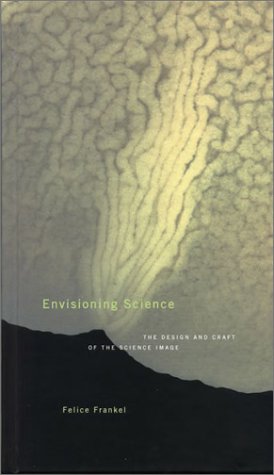 Envisioning
Science: The Design and Craft of the Science Image
Envisioning
Science: The Design and Craft of the Science Image
by Felice Frankel
MIT Press, 2002
At one level, this is a fascinating how-to book on photography for scientists to facilitate communicating their research, but it is also much more, presenting hundreds of beautiful and stunning images, many at the micro and nano scale. Frankel says, “Using compelling and accessible pictures is a powerful way to draw the public’s interest to the world of research. When the public develops a more intimate association with science the results will be both a richer society and one supporting the important efforts in scientific investigation.” Frankel, Director of the Envisioning Science Project at MIT, says scientists should not be afraid to ad marvel and wonder to their images. This book will delight anyone interested in science, photography or beautiful pictures. (Frankel is co-author of On the Surface of Things, also reviewed here.
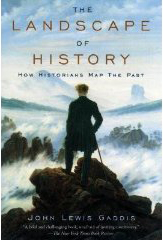 The Landscape of History: How Historians Map the Past
The Landscape of History: How Historians Map the Past
by John Lewis Gaddis
Oxford University Press, 2002
History is a science, according to Gaddis, who is the Robert A. Lovett Professor of Military and Naval History at Yale University. It’s an inexact science, he admits, based on fragmentary and sometimes biased data. But that’s no different from what Gaddis calls “historical sciences” like paleontology, anthropology, geology and climatology which can't conduct replicable experiments and also rely on historical data. And, he points out, historians use data from many sciences to authenticate and enhance the written record. This book, which is a delight to read, explores the basic nature of human reason and the limits of factual knowledge.
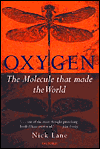 Oxygen:
The Molecule that made the World
Oxygen:
The Molecule that made the World
By Nick Lane
Oxford University Press, 2002
Oxygen is both toxic and indispensable to life. The book takes the reader on an enthralling journey explaining the role of oxygen in evolution and why it’s necessary for biological diversity. The story of oxygen also explains the need for two sexes and for death. Oxygen offers the latest information about controversial topics like aging and cloning, drawing on many scientific disciplines. The book has enough information to satisfy serious students of science, yet it is clearly written and accessible to any interested lay person. Oxygen is a fascinating biography of the element that makes up more than half the human body and makes our existence possible.
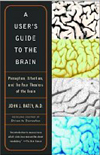 A
User’s Guide to the Brain: Perception, Attention,
A
User’s Guide to the Brain: Perception, Attention,
and the Four Theaters of the Brain
by John J. Ratey
Vintage Books, 2002
Ratey, a clinical professor of psychiatry at Harvard Medical School, provides a layman’s guide to the latest knowledge about the human brain, which he describes as “the most complicated structure in the universe.” How complicated? We each have about 100 billion neurons, each with hundreds or thousands of connections to other neurons, making for about 40 quadrillion potential connections (that’s 4 followed by 16 zeroes). Furthermore, our every thought and action re-structures our brains. Ratey succeeds in eliminating most of the jargon associated with brain research, providing a book written in plain and often entertaining English that’s dense with information but accessible to any interested reader of high school age and older.
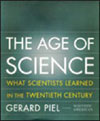 The
Age of Science: What Scientists Learned in the Twentieth Century
The
Age of Science: What Scientists Learned in the Twentieth Century
by Gerard Piel
Basic Books, 2001
This is an ambitious and beautifully written overview of the explosive growth of scientific knowledge in the twentieth century. Piel, founder and longtime publisher of the Scientific American, starts with the basics, what scientists do, then describes the development of major fields of scientific knowledge: astronomy, biology, nuclear physics, earth history and the evolution of life. Piel is not a scientist–he admits to having math phobia in his student days–but he pioneered the field of science writing for the general public with Life magazine in the 1930's. He does not talk down to his audience and parts of the book are slow going, but it’s well illustrated and includes interesting insights concerning the scientists who made the discoveries. This is a great resource for anyone who wants a basic grounding in science and how it got where it is today.
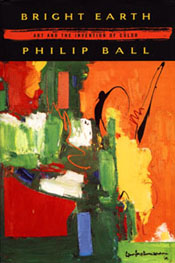 Bright
Earth: Art and the Invention of Color
Bright
Earth: Art and the Invention of Color
by Philip Ball
Farrar, Straus and Giroux, 2001
We may assume that everyone thinks about color in the same way, but some tribal languages have only two words for color, light and dark, while other languages have only a few more. Our way of thinking about color is very recent. The use of color in art has often been denigrated. Roman writer Pliny the Elder thought the use of bold color was decadent and claimed the ancient Greeks used only four colors, black, white, red and yellow. Modern architect LeCorbusier asserted that color is “suited to simple races, peasants, and savages.” Ball, a science writer who holds a degree in chemistry from Oxford and a Ph.D. in physics from the University of Bristol, takes the reader through a history of color and painting, including color photos of many famous paintings and explanations of what they looked like before their colors deteriorated. This comprehensive book is sure to leave the reader with a greater appreciation of art, science, history and culture.
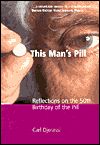 This
Man’s Pill: Reflections on the 50th Birthday of the Pill
This
Man’s Pill: Reflections on the 50th Birthday of the Pill
by Carl Djerassi
Oxford University Press, 2001
One of the inventors of the birth control pill, Carl Djerassi gives his account of the development of the pill, which differs from some other accounts, and offers his personal insights into the consequences of the pill. Djerassi, a chemistry professor at Stanford, says development of the pill occurred during a period of technological euphoria, and could not be repeated today. He also talks about the barriers, mostly social and economic, to developing a birth control pill for men. Djerassi says the pill contributed to the sexual revolution of the 1960s but did not cause it. Djerassi also speculates about the future of contraception and sex, now that sex has been largely separated from procreation. In recent years, Djerassi has turned to writing what he calls “science in fiction”. His stated goal is to smuggle science to the general public disguised as fiction. Djerassi’s writing style is clear and direct and he’s a good storyteller. His novels include Cantor’s Dilemma, The Bourbaki Gambit, and Menachem’s Seed. Djerassi has also written plays and poetry as well as hundreds of scientific articles. Djerassi maintains his own website, www.djerassi.com.
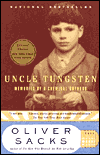 Uncle
Tungsten: Memories of a Chemical Boyhood
Uncle
Tungsten: Memories of a Chemical Boyhood
by Oliver Sacks
Alfred A. Knopf, 2001
Oliver Sacks, a distinguished neurologist and engaging storyteller, was born into a large, science-oriented family. The book tells about his boyhood experiences with the wonders of chemistry (Sacks’ “Uncle Tungsten” owned a factory that made light bulb filaments). While relating his juvenile adventures, Sacks communicates a lot of science and history of science with a compelling and often humorous touch, drawing the reader into a journey of discovery. Sacks is the author of Awakenings, The Man Who Mistook His Wife for a Hat, and many other books, for which he has received numerous awards.
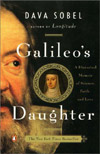 Galileo’s
Daughter: A Historical Memoir of Science, Faith and Love
Galileo’s
Daughter: A Historical Memoir of Science, Faith and Love
by Dava Sobel
Penguin, 2000
This book is a best seller which offers a unique perspective on the life and times of Galileo. It’s based on 124 letters to Galileo from his only daughter Sister Marie Celeste, a cloistered nun. (Unfortunately, Galileo’s letters to her have not been found.) Though Galileo’s dispute with the Roman Catholic Church is well known (the Church forced him to recant some of his discoveries), the letters show that Galileo himself saw no conflict between his search for scientific truth and his belief in God. Sister Marie Celeste was intelligent, educated and devoted to both her father and the Church, and the book reveals a very human side of scientific endeavor. Like Sobel’s other best seller, Longitude, and Sobel herself, this book has won several prestigious awards.
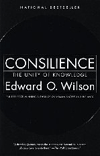 Consilience:
the Unity of Knowledge
Consilience:
the Unity of Knowledge
by Edward O. Wilson
Alfred A. Knopf, 1998
Wilson, a distinguished biologist who pioneered the concepts of biodiversity
and sociobiology, attempts nothing less than unifying all branches of
knowledge, not only the sciences but the arts, humanities and philosophy
as well (he borrows the word consilience, meaning “a coming together”,
from 19th century philosopher William Whewell). Wilson is an optimist
who believes that the universe is orderly and that all knowledge is accessible
through consistent natural laws. He says this belief reached an apogee
during the Age of Enlightenment, when “natural philosophers”
saw no distinctions between different branches of knowledge, a unity which
has been lost with the increasing specialization of researchers in all
fields. Wilson was raised a devout Southern Baptist and speaks with evangelical
zeal concerning the quest for knowledge–he says, “..science
is religion liberated and writ large.” Whether or not Wilson succeeds
in his quest for unity, the book is an exciting and very readable journey
through the history and philosophy of many fields of learning by the author
of two Pulitzer Prize winning books, On Human Nature and The Ants.
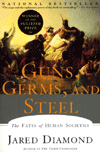 Guns,
Germs and Steel: The Fates of Human Societies
Guns,
Germs and Steel: The Fates of Human Societies
by Jared Diamond
W.W. Norton and Company, 1997
This ambitious book attempts
to explain why civilization arose in some places and not others. One hundred
years ago the popular explanation was racist–that Europeans are
intellectually and morally superior. Diamond’s conclusion is different.
After an exhaustive look at the development of domesticated plants and
animals, and the diseases that came with the domestication of animals,
he concludes that the chief reason is geography and the availability of
suitable plants and animals. Diamond also asserts that history should
be considered a science since it draws on many scientific disciplines
including archaeology, anthropology, linguistics, genetics, molecular
biology and epidemiology. Diamond says human history is a “historical
science” just like many other sciences which do not lend themselves
to laboratory experiments including astronomy, geology and climatology.
Diamond’s book is a fascinating and informative best seller which
won a Pulitzer Prize.
 On
the Surface of Things: Images of the Extraordinary in Science
On
the Surface of Things: Images of the Extraordinary in Science
by Felice Frankel
and George M. Whitesides
Chronicle Books, 1997
A collaboration of art and science has produced a book of stunning photographs of the surface of substances, some at the sub-microscopic level, along with explanations by Harvard chemistry professor George M. Whitesides. Felice Frankel is artist-in-residence and a research scientist at MIT. The images range in scale from ice crystals on a window pane to strands of DNA and the dots and dashes on the surface of a compact disc. All the photos are colorful and eye-catching. The close-up of rust is as beautiful in its own way as the close-up of a butterfly?s wing, and the explanations of why things look the way they do add to the reader's appreciation. This book should appeal not only to science and photography buffs, but to anyone with a curious mind and an eye for beauty. Frankel is the author of Envisioning Science: The Design and Craft of the Science Image, also reviewed here.
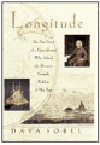 Longitude:
The True Story of a Lone Genius Who Solved the Greatest Scientific Problem
of His Time
Longitude:
The True Story of a Lone Genius Who Solved the Greatest Scientific Problem
of His Time
by Dava Sobel
Walker and Company, 1995
The greatest scientific problem of the time (1700s) was determining longitude at sea. Poor navigation caused many shipwrecks and the problem had defeated the greatest scientific minds for 200 years. This is a story of science–the search brought about other discoveries including the first accurate determinations of the weight of the earth, the distance to the stars and the speed of light. It is also a very human story of adversity, perseverance and ultimate triumph as the lone genius, John Harrison, fought for 40 years to claim the prize that he had earned. This award winning book is very accessible to almost any reader, teen or adult, telling a fascinating and compelling story in just 175 pages.
 A
Mathematician Reads the Newspaper
A
Mathematician Reads the Newspaper
by John Allen Paulos
BasicBooks, 1995
Paulos is a Professor of Mathematics at Temple University and winner of the American Association for the Advancement of Science award for promoting public understanding of science and technology. This is one of several books he has written to promote mathematical literacy. An earlier book, Innumeracy: Mathematical Illiteracy and It’s Consequences, was a best seller. This book contains many useful insights to important subjects like risk assessment, evaluating medical test results and exposing conspiracy theories. Written in a concise, newspaper-like style, it offers a handy guide to reading a newspaper and understanding what the information really means. Paulos’ most recent book, A Mathematician Looks at the Stock Market, was prompted by his own losses in the dot-com crash. Paulos admits that even a mathematician can be taken in by clever manipulation of numbers.
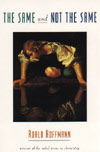 The
Same and Not the Same
The
Same and Not the Same
by Roald Hoffmann
Columbia University Press, 1995
This is a fascinating look at the importance of small differences in chemicals and in art, and the difficult choices facing scientists. For example, a molecule called d- and l-carvone is the chief ingredient in the odor of caraway while its mirror image, identical in all other respects, is the chief ingredient in spearmint. Hoffmann, a Nobel laureate in chemistry and a published poet, explains many of these seemingly small but extremely important differences, the conflict between human nature and the goal of scientific objectivity and the social responsibility of scientists in a democracy. Hoffmann weaves together an eloquent story of science, art and human nature that makes chemistry accessible to everyone and provides an insiders explanation of how science is done.
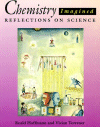 Chemistry
Imagined: Reflections on Science
Chemistry
Imagined: Reflections on Science
By Roald Hoffmann and
Vivian Torrence
Smithsonian Institution Press, 1993
This book is a rare collaboration of art and science. Vivian Torrence is an artist who works in watercolor and collage. Roald Hoffmann is a Nobel Prize winning chemist. The book, which grew out of an exhibit sponsored by the National Academy of Sciences, the National Science Foundation, the Maytag Corporation, and Cornell University, contains 30 works by Torrence with poems and essays by Hoffmann. The two met when they were both in residence at the Djerassi Foundation, an artists’ colony founded by Stanford University chemist Carl Djerassi. Sometimes Torrance created a collage and Hoffmann responded with a poem or essay. Sometimes Hoffmann’s writings inspired a collage and at other times they passed ideas back and forth. The authors maintain that science and art have a lot in common, most obviously creativity, and that the perceived gap between them is entirely artificial. In his essays, Hoffmann offers an explanation of basic chemistry that’s far more lucid and compelling than any textbook. This book is a good choice for those seeking basic literacy in chemistry with an artistic touch.
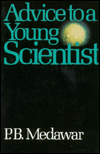 Advice
to a Young Scientist
Advice
to a Young Scientist
by Peter Medawar
Harper and Row, 1979
While it’s not a recent edition, this short (106 pages) and charmingly written book offers valuable insights into the nature of science and scientists. Medawar participated in the early development of penicillin, won the Nobel Prize in 1960 for his research on the rejection of organ and tissue transplants and was knighted by the Queen of England. For many years he headed the British National Institute for Medical Research. To Medawar, science is more than just a search for facts–research must be directed by hypotheses which require imagination and creativity to formulate and science is “a logically connected network of theories that represents our current opinion about what the natural world is like.” He says a scientist is simply a seeker after truth and the Scientific Method just plain common sense. Aspiring young scientists would do well to heed this personal advice from an old hand, which also provides an insiders level of understanding for anyone interested in science.